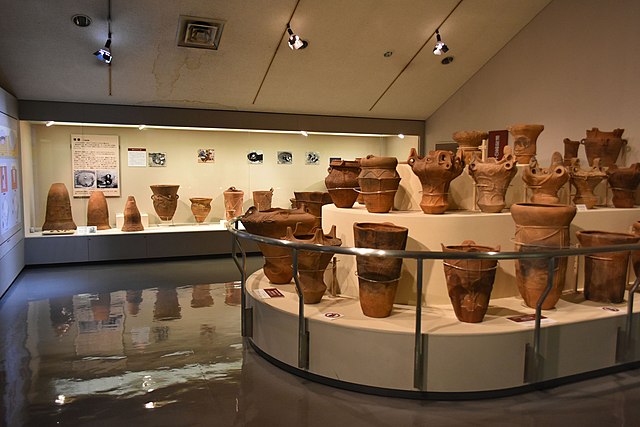The culture of Japan has changed greatly over the millennia, from the country's prehistoric Jōmon period, to its contemporary modern culture, which absorbs influences from Asia and other regions of the world.
Ukiyo-e, The Great Wave off Kanagawa, by Hokusai
Himeji Castle is a World Heritage Site and a National Treasure of Japan.
Osechi, New Year special dishes in three-tiered box
Torii entrance gate at Kamigamo Shrine, Kyoto
In Japanese history, the Jōmon period is the time between c. 14,000 and 300 BC, during which Japan was inhabited by a diverse hunter-gatherer and early agriculturalist population united through a common Jōmon culture, which reached a considerable degree of sedentism and cultural complexity. The name "cord-marked" was first applied by the American zoologist and orientalist Edward S. Morse, who discovered sherds of pottery in 1877 and subsequently translated "straw-rope pattern" into Japanese as Jōmon. The pottery style characteristic of the first phases of Jōmon culture was decorated by impressing cords into the surface of wet clay and is generally accepted to be among the oldest in the world.
Reconstruction of the Sannai-Maruyama Site in the Aomori Prefecture. It shares cultural similarities with settlements of Northeast Asia and the Korean Peninsula, as well as with later Japanese culture.
Incipient Jōmon pottery (14th–8th millennium BC) Tokyo National Museum, Japan
Jōmon pottery in the Yamanashi museum.
Spray style Jōmon pottery








